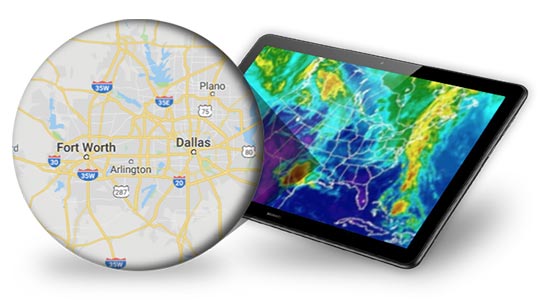24/7 Emergency Services
November 2016:
In past issues of Contents Solutions we have described in some detail what you can expect from a contents team once they have arrived on site for a fire, smoke or water damage restoration.
We wrote about the initial walkthrough and the “digital photo inventory” that helped keep track of the insured’s valuables and could provide before and after images of salient items.
But there are so many little, seemingly insignificant, efforts made by the team that may go unnoticed in the urgency to get the job done in a timely manner.
For example, the contents manager will probably encourage the owners to remove valuables, money, jewelry, credit cards, etc., immediately. Blank checks are a good idea for an owner to have if he/she has to vacate for an extended period.
And when appropriate, the team manager will invite the insureds to make up a list (or provide items to be “rushed” through the cleaning process so they are available within 24 hours. Clothing for the next day’s wear would fall into this list as would any obviously necessary materials to maintain the family’s quality of live for the first 48 hours.
We would also recommend that the insureds put important papers in large zip-lock baggies to keep them from getting further contaminated before they can be duplicated. Of course our front line workers are trained to find and preserve such items, but the insureds can make a bee-line to them if they are aware of their potential significance.
Photographs can be cleaned with soot sponges and if they are wet, they must be separated before being allowed to dry, because if they are not, they may actually fuse together making future restoration an expensive and time consuming effort (see some of our earlier issues for specific articles about how to restore and preserve photographs and film.)
In a fire restoration, carcinogens can be created in food that has been exposed to the heat, so whether they are sealed (in a can) or unopened – even consumables in plastic bottles or plastic containers should be discarded. If such is the case, the contents manager will provide a document clearly naming the items, so the owner can sign, signifying permission for the disposal of these products.
In like manner, any over-the-counter or prescription pharmaceuticals that have been exposed to heat, smoke, sewage back-up or even ordinary water damage may need to be thrown away as well. Of course, the contents manager will ask the insured to sign a document giving permission to discard them.
The upside of such an effort is that the insured will know right away which prescriptions need to be replaced.
These efforts may seem to be little more than good “customer service.” But, untrained teams rarely think of this sort of restoration. Items get thrown away indiscriminately, or worse, contaminated items are left in place (the workers not caring or feeling any responsibility for the care and wellbeing of their clients).
When you hire professionals you can expect professional level service.
When you don’t you can’t.
BABY STUFF
”Electrolyzed water,” starts off as ordinary water, gets upgraded with an electrical charge, cleans, disinfects and turns back into water in minutes – no residue, no chemicals.
But after a fire, virtually anything that was affected by the heat or smoke and that a baby might put in its mouth should be thrown away (think “Binkies”). Soft plastics can create VOCs and carcinogens when heated.
They absorb smoke odors and might be cleaned with bleach or ultrasonics, but why take chances? Contents team managers want to save as many items as they can – a beloved teddy bear, baby clothes, toys and other cherished items are examined carefully, If they can be saved, the contents specialists will know how.
But if they are any kind of threat to the well-being of the child, we won’t take the chance of trying to save them in order to hold on to a few replacement dollars.
Pacifiers can be replaced – cheaply.
A child’s health is beyond price.
SOOT MAGNETS
Virtually anything metallic or electronic will rust, pit or corrode when soot combines with moisture and becomes acidic on their surfaces.
Big screen TVs, absolutely.
Computers and monitors, unless they are properly cleaned, will have components starting to corrode within 48 hours. Cell phones share the same challenge, as do stereo systems, DVD players, etc.
But there are some things untrained restorers might not recognize as potential losses. Little things like curling irons, hair dryers, and toasters are all subject to the soot/water/acid combination.
Some untrained workers will clean the outside of a big screen television or the plastic case of a computer and may even use compressed air to blow in the vents and between the keys of a keyboard – but soot clings to electronic components and most metals, like a magnet. And once it mixes with moisture, no amount of external wiping or air puffs through vent slots will help.
It is no time for amateurs and may mean the difference between thousands of wasted dollars and having a healthy bottom line.
Some Items Can't Be Restored
Contents pros hate to “total loss” any item, but sometimes it becomes necessary in order to save time and money for the insured and their carrier.
One example is bed mattresses. Some contents teams will make a valiant attempt to restore expensive mattresses and have been exposed to smoke and fire damage, but experience has shown that such efforts often meet with failure. The insureds put their faces down next to the mattress (even after a thorough cleaning) only to declare that the smoke odors are still there.
Some teams will even place the mattresses in an ozone chamber and get at least passable results, but then have to deal with fading, weakened fabric and sometimes brittle seams – all caused by the process itself.
A rule of thumb seems to be: if the bed was made – sheets and blankets in place to protect the mattress during the disaster – then there is a better than even chance that it can be restored. But if it had no protection from the smoke particulates, there will probably have to be a monumental effort to restore it, which may be cost prohibitive.
Books can be restored, but if they are wet the value of the book is a strong factor in how much effort should be put forth to save it or duplicate it (legal documents are worth far more than the paper upon which they are written – but a romance novel or modern mystery may be worth less than the price on its cover).
VHS and audio cassettes offer their own challenges. And here again, the material on them may be intrinsically priceless to the owner, or may be old trash someone forgot to throw away.
If they are in a plastic case and soot free, the case might have to be thrown away (soft plastics retain smoke odors), but the tapes themselves may well be salvageable.
But if gritty soot has worked its way into the tapes, playing them will destroy the players and they should be thrown away. Only an expert can clean soot from the tapes, using massive amounts of time and special solutions (even water can damage the oxides on VHS tapes).
Green Cleaners VS Norovirus
A few years ago, Aaron Baunee, managing editor of Cleaning and Maintenance Management magazine, interviewed several authorities for an article entitled, “Combating A Norovirus Outbreak.” In it Kim LaFreniere, Ph.D., associate research fellow for Clorox Professional Products Company, stated, “It takes as few as 18 virus particles to cause an infection and, once infected, a person is capable of quickly infecting many others.”
And Nick Pangaro, operations manager for KBM Facility Solutions added, “Green cleaners aren’t designed to kill microorganisms. It’s important to not get so wrapped up with green cleaning ideals that we endanger public health.” So what do the contents professionals use? Watch for future issues of Contents Solutions (or just give us a call). We are looking forward to amazing you!











